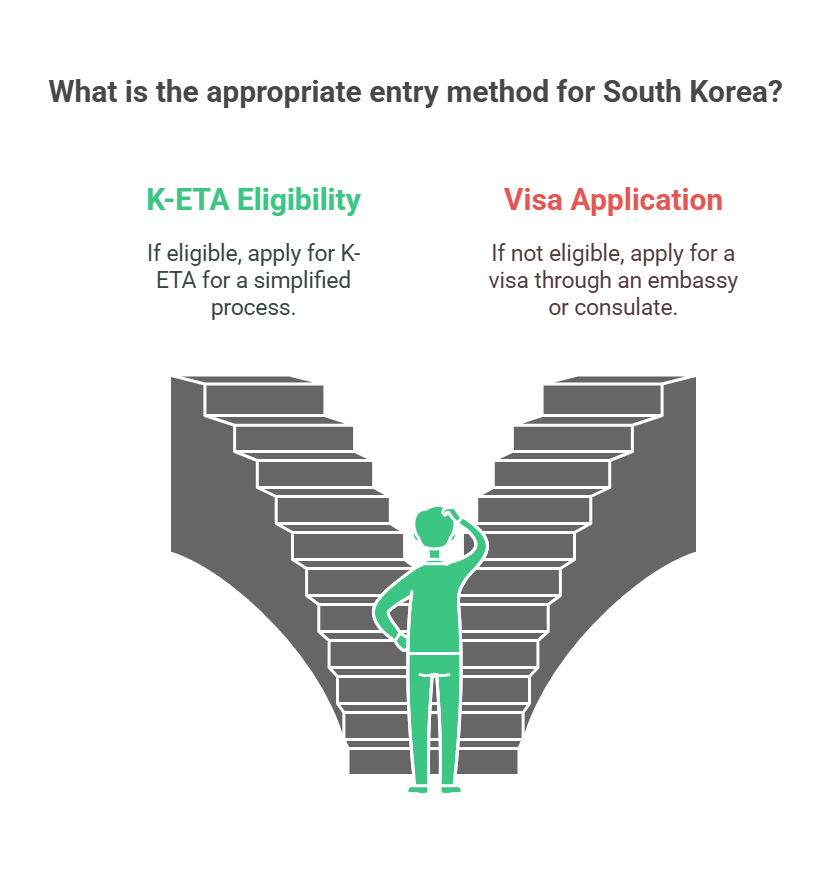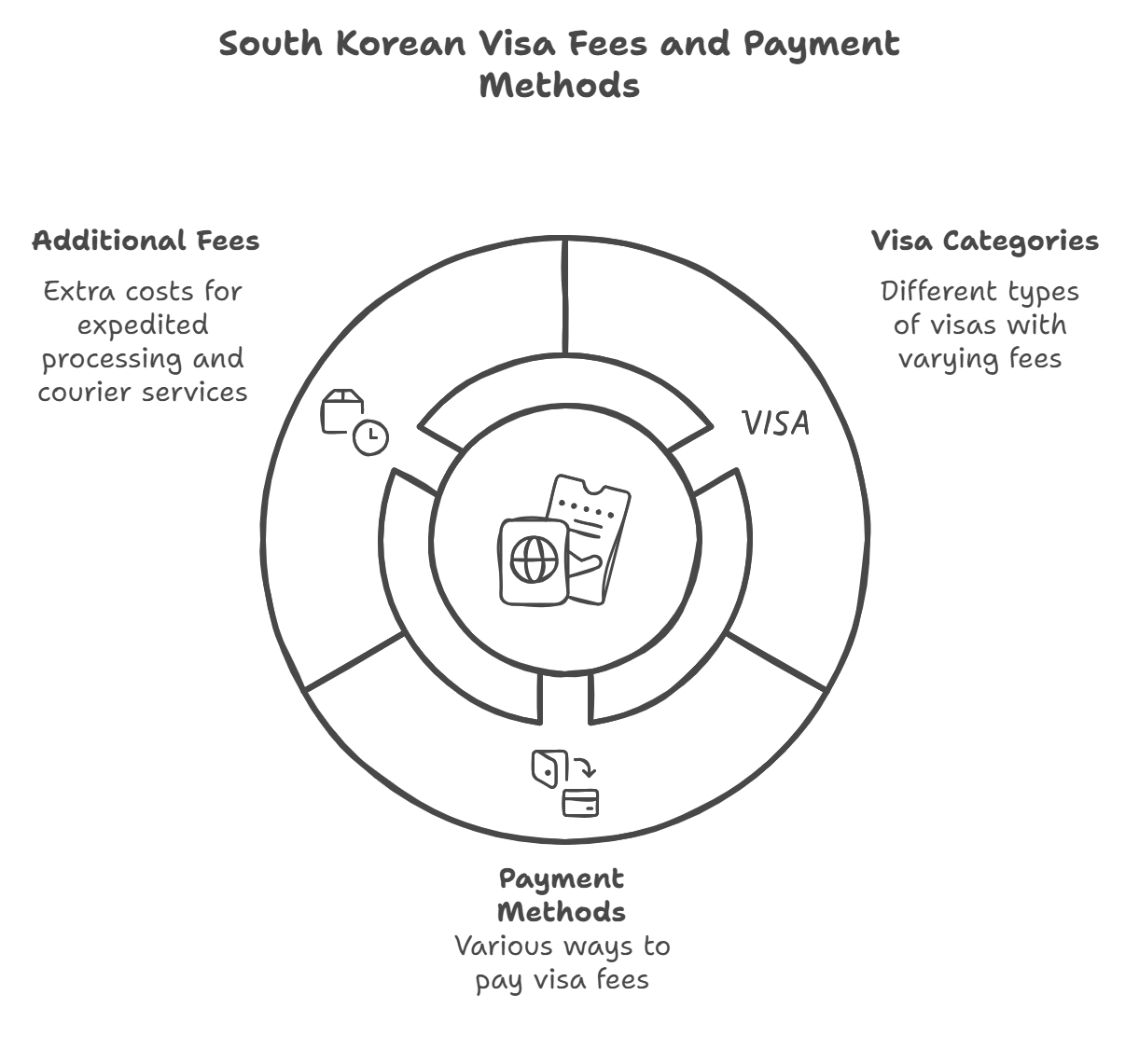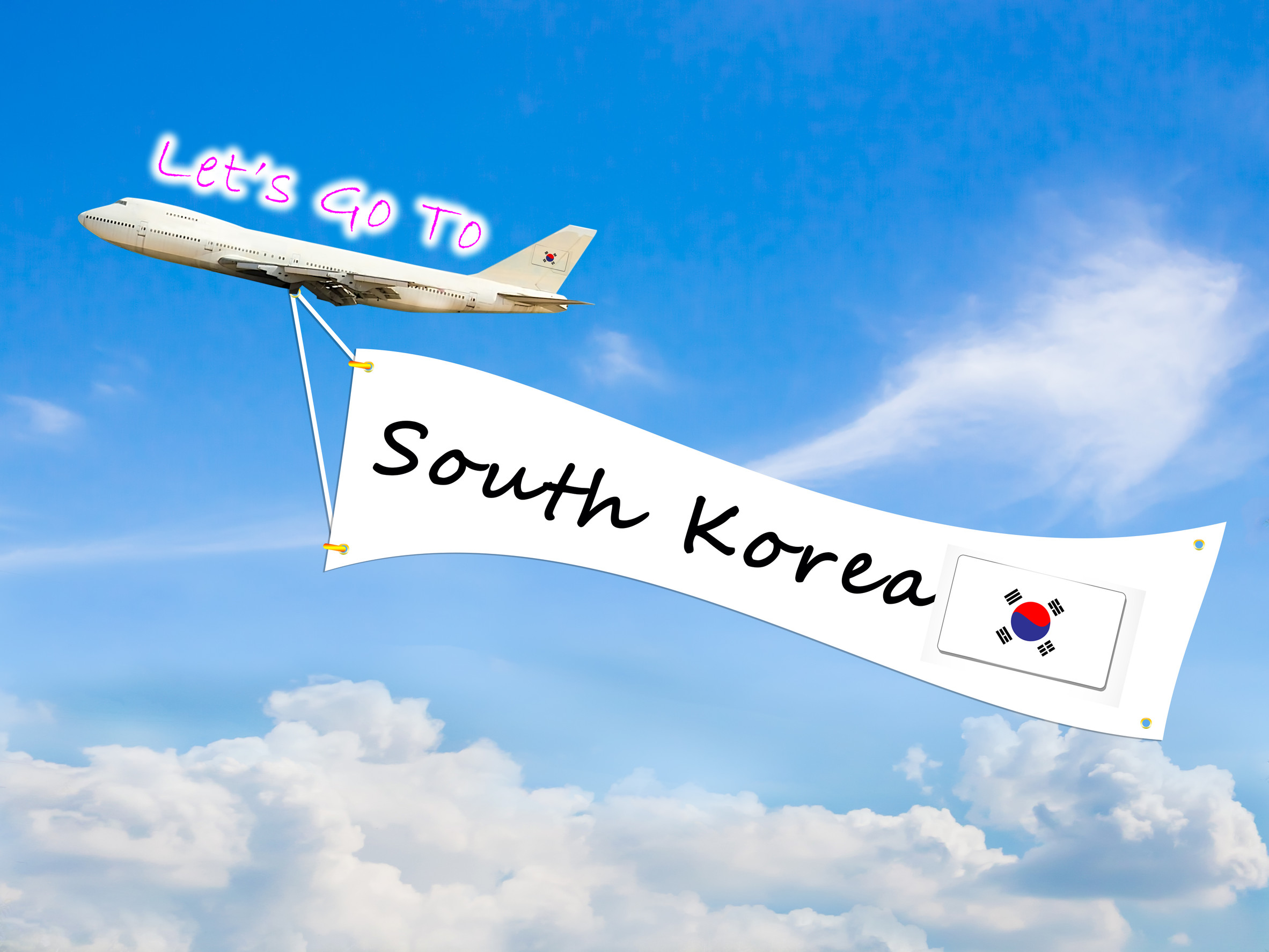
Who Needs a Regular Visa?
You must apply for a regular visa if:
- Your Nationality is Not K-ETA Eligible: Travelers from countries excluded from the K-ETA program must obtain a visa.
- Purpose of Visit: Activities such as employment, higher education, long-term business stays, or permanent residency require a regular visa.
- Duration of Stay: If your visit exceeds the 90-day limit (or shorter durations for certain nationalities) allowed under the K-ETA.
- Previous Visa Rejection: If you were denied a K-ETA or have immigration restrictions.
Benefits of a Regular Visa for South Korea
A regular visa offers numerous advantages, especially for long-term stays or specific purposes:
- Flexibility in Purpose: Engage in employment, education, family reunification, and other activities beyond short-term visits.
- Extended Stay: Stay for months or years, depending on the visa type.
- Legal Work Opportunities: Work legally and access employment benefits.
- Residency Pathways: Certain visas lead to permanent residency or citizenship.
- Access to Services: Gain eligibility for national health insurance, education, and more.
- Stability: Ensure legal compliance, reducing risks of fines or deportation.
- Professional Growth: Participate in specialized work or research opportunities.
- Cultural Immersion: Experience South Korea’s culture, language, and society in-depth.
Types of South Korea Regular Visas
South Korea offers various visa types based on the purpose and duration of your visit. Below is a categorized overview:
|
Visa Type |
Detail and Type |
|
Short-Term Visas (C-Visas) |
C-3-1 (Tourism/General Visit): For short-term tourists or general visitors. C-3-4 (Business): For attending business meetings, conferences, or other short-term business activities. C-3-9 (Family Visit): For visiting relatives residing in South Korea. |
|
Long-Term Visas |
D-2 (Student Visa): For international students enrolled in full-time academic programs at South Korean universities. D-4 (Training Visa): For individuals undergoing language training or technical training programs. E-2 (Teaching Visa): For foreign language instructors, commonly used by English teachers. E-5 (Professional Employment Visa): For highly skilled professionals in specific fields. F-6 (Marriage Visa): For foreign nationals married to South Korean citizens. |
|
Working Holiday Visa (H-1) |
Available for nationals from specific countries with agreements with South Korea, allowing young travelers to work while visiting. |
|
Transit Visa (G-1) |
For travelers passing through South Korea who need a short stay in the country. |
|
Diplomatic and Official Visas (A-Visas) |
For travelers passing through South Korea who need a short stay in the country. |
|
Special Visas |
F-4 (Overseas Korean Visa): For individuals of Korean heritage residing abroad. E-7 (Specially Designated Activities Visa): For professionals in specific occupations or industries requiring high-level expertise. |
Requirements for a Regular Visa for South Korea
Applying for a regular visa requires submitting specific documents tailored to your travel purpose and visa type. Here’s an overview of the general requirements:
- Visa Application Form: Completed and signed.
- Valid Passport: At least six months of validity with blank pages for the visa.
- Passport-Sized Photos: Recent photo meeting embassy specifications.
- Visa Fee: Payment varies based on visa type and nationality.
- Proof of Financial Stability: Bank statements or financial guarantees.
- Travel Itinerary: Flight and accommodation details
- Employment Visas (E-Series): Signed employment contract. Employer’s business registration certificate.
Student Visas (D-2, D-4): Admission letter from a South Korean institution. Proof of tuition payment or scholarship.
Family Visas (F-Series): Marriage certificate (for spouse visas). Birth certificates (for dependent visas). Korean family registry (if applicable).
Business/Investment Visas: Invitation letter from a South Korean company. Proof of business registration or investment.
Additional Requirements
- Criminal Background Check: May be needed for long-term visas, such as work or residence.
- Health Certificate: Proof of good health, sometimes required for specific visas.
- Proof of Purpose: Detailed explanation of your travel purpose and activities in South Korea.
Application Process for a Regular Visa for South Korea
If you're planning to visit South Korea for purposes like work, study, or family visits and are not eligible for the K-ETA, you’ll need to apply for a regular visa. This process involves a few straightforward steps to ensure your application is complete and accurate. Here's an easy-to-follow guide to the application process:
Determine the Correct Visa Type
Begin by identifying the visa type that best matches your purpose of travel. Whether you're visiting for business, education, or to reunite with family, choosing the correct visa ensures you meet all necessary requirements for your stay.
Gather Required Documents
Once you know the visa type, collect the necessary documents. This includes your completed application form, passport, passport-sized photos, and additional documents specific to your visa category (e.g., employment contract, admission letter from a school, or proof of financial stability).
Submit Your Application
Schedule an appointment with the nearest embassy or consulate. On the day of your appointment, submit your application, pay the visa fee, and provide any required biometric data or additional information.
Wait for Processing and Collect Your Visa
After submission, your visa application will be processed, which typically takes 1-6 Working Days. Once approved, you can pick up your passport with the visa affixed or opt for courier delivery if the service is available.
Collect Your Visa
Once approved, you can pick up your passport with the visa affixed or opt for courier delivery if the service is available.
Validity of a Regular Visa for South Korea
The validity of a regular South Korea visa depends on the type of visa you hold and your specific circumstances. Here’s an overview:
|
Short-Term Visas (C-Series) |
Long-Term Visas (D, E, F-Series) |
Multiple-Entry Visas |
|
Tourist/Business/Family Visit Visas (C-3): Typically valid for 30, 60, or 90 days. In some cases, multiple-entry visas may be issued for up to 2 years, depending on the applicant's nationality and travel history. |
Student Visas (D-2, D-4) Valid for the duration of your study program, usually 6 months to 2 years, depending on the course. Work Visas (E-series) Valid for 1 to 3 years, with the possibility of renewal based on employment status. Family Visas (F-Series) Valid for 1 to 3 years, depending on your relationship with a South Korean citizen or resident. |
Certain visa types, particularly business visas, may be issued as multiple-entry visas, allowing multiple visits within a validity period of up to 2 years. |
Processing Time for a Regular Visa for South Korea
The processing time for a South Korean regular visa can vary based on several factors, including the type of visa, the complexity of your application, and the embassy or consulate handling your request. Below is a general overview:
Standard Processing Time
- Tourist, Business, and Family Visit Visas (C-Series): Typically processed within 1-6 Working Days.
- Work and Student Visas (E-Series, D-Series): Generally require 10 to 15 business days, depending on the specific visa category and the details of your application.
Factors Influencing Processing Time
- Visa Category: More complex visa applications, such as those for employment or long-term study, may require additional review, resulting in longer processing times.
- Embassy or Consulate Location: Processing times may differ based on the embassy or consulate where the application is submitted, influenced by local workload and operational schedules.
- Application Completeness: Incomplete or incorrect applications can cause delays, as they may require further documentation or clarification.
Expedited Processing
Certain South Korean embassies and consulates offer expedited processing for an additional fee. Applicants should inquire directly with the relevant embassy for availability and conditions.
Fees and Payment for a Regular Visa for South Korea
The fees for a South Korean regular visa vary depending on the type of visa you are applying for, the duration of stay, and your nationality. Below is an overview of the general approach to visa fees and payment methods:

Visa Extensions for South Korea
In some cases, travelers can extend their South Korean visa to stay longer. The ability to extend depends on the visa type, your situation, and approval from immigration authorities. Here’s what you need to know:
Eligibility for Extensions
- Tourist Visas (C-3): Typically, tourist visas are not extendable. However, if you’re in South Korea and face exceptional circumstances (e.g., health issues), you may apply for a short extension, but it's not guaranteed.
- Work and Student Visas (E-Series, D-Series): These visas are generally extendable as long as you remain employed or enrolled in your study program. Extensions are typically granted for 1 to 2 years.
- Family Visas (F-Series): Extensions are available, especially for long-term residents or spouses of South Korean citizens, and are granted on a case-by-case basis.
Application Process for Extensions
To extend your visa, follow these steps:
Apply Early
Start the extension process 2 to 3 months before your visa expires.
Visit the Immigration Office
Submit your application at the local immigration office in South Korea.
Provide Required Documents
You may need documents like your passport, proof of financial stability, or evidence of continued employment or studies.
Pay the Extension Fee
Some visa extensions require a fee.
How to Avoid Visa Rejection for South Korea
To increase your chances of a successful visa application and avoid rejection, follow these tips:
- Submit Complete and Accurate Documents: Ensure all required documents are submitted accurately and fully. Missing or incorrect information is a common cause for rejection.
- Follow Embassy Instructions: Adhere to the specific guidelines of the South Korean embassy or consulate, including document formats and payment methods.
- Apply for the Correct Visa: Make sure you are applying for the right visa based on your travel purpose to avoid automatic rejection.
- Show Strong Ties to Your Home Country: Provide proof of your connections to your home country (e.g., employment, family, property) to assure authorities that you will return.
- Be Honest and Transparent: Provide truthful information. Misleading details or false documents can lead to immediate rejection.
- Plan Ahead: Ensure your passport is valid for at least six months and submit your application well in advance of your travel date.
Tips for a Successful South Korea Visa Application
To ensure a smooth and successful South Korea visa application, consider the following tips:
Start the Process Early: Apply at least 2-3 weeks before your planned travel date to allow time for processing and to address any potential issues.
Double-Check All Documents: Ensure that all required documents are complete, accurate, and up to date. Missing or incorrect documents can delay or jeopardize your application.
Follow the Embassy’s Guidelines: Each embassy may have specific requirements, so carefully review and follow the instructions provided by the South Korean consulate where you’re applying.
Be Transparent and Honest: Provide honest and clear information on your application form. Discrepancies or false information can lead to rejection.
Demonstrate Strong Ties to Your Home Country: Show proof of your intent to return, such as stable employment, family connections, or property ownership, to strengthen your application.
Ensure Your Passport is Valid: Your passport should be valid for at least six months beyond your intended stay and have enough blank pages for the visa and stamps.
Pay Attention to Visa Type: Choose the correct visa type based on your purpose of visit. Applying for the wrong visa category can result in delays or rejection.
Stay Updated on Processing Times: Understand the typical processing time for your visa type and stay informed about any changes to the embassy’s procedures or holidays that may affect processing.
Frequently Asked Questions
Whether you need a visa depends on your nationality, the purpose of your visit, and the length of your stay. Citizens of certain countries can enter South Korea visa-free for short stays, while others require a visa. Check the South Korean embassy’s website or consult the visa requirements for your country.
Visa processing generally takes 1-6 Working Days, depending on the type of visa and the embassy or consulate. It’s recommended to apply at least 2-3 weeks before your intended departure.
Some visa types, such as work, study, and family visas, can be extended if you meet the necessary requirements. Tourist visas are typically not extendable, but exceptions may apply in certain circumstances. Check with the local immigration office for more details.
The documents required typically include your passport, completed visa application form, passport-sized photos, proof of travel purpose (e.g., flight itinerary, hotel reservations, invitation letters), and financial proof. Additional documents may be required depending on the visa type.
If your application is rejected, you will usually be informed of the reasons for rejection. You may reapply after addressing the issues or providing additional documentation. However, repeated rejections may lead to more scrutiny on future applications.
Content Disclaimer: Although this information was last updated in June 2025, we recommend verifying with the appropriate agencies, embassies, and airlines to ensure complete accuracy regarding your travel plans.


To help us improve